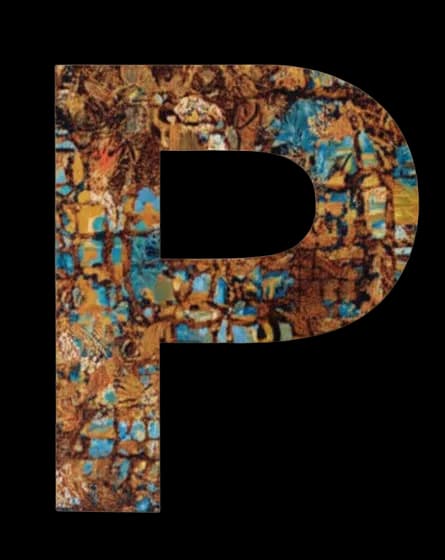





A Historical Tapestry of the Pahari
The term Pahari is derived from Pahar (Sanskrit for 'mountain')—encompasses a mosaic of communities inhabiting the Himalayan ranges stretching from Nepal and Uttarakhand through Himachal Pradesh to Jammu and Kashmir. As per Pahari Mythology the first human was born after the gods. The imaginary world of the Paharia was known as Indakup Bhuinghar– the underworld. Even the sunlight was inept at reaching there. After God’s birth in that nether region, the first human to take birth in that sacred place was a Pahariå” (Sahitya Akademi; Stories and Myths of the Pahari Community).
Prehistoric and Early Historic Roots (c. 3000 BCE - 500 BCE)
Archaeological findings like tools and pottery in sites such as Burzahom (Kashmir, c. 2700 BCE) indicating early settlement by agro - pastoral communities (likely ancestors of Paharis)
Vedic Period (c. 1500 - 500 BCE)
The earliest possible references to Paharis emerge in Vedic texts, particularly the Rigveda (c. 1700-1100 BCE), one of the oldest sacred texts of Hinduism. The Rigveda mentions various tribes and geographical regions in northwestern India, including the Himalayan foothills.
Epic Period (c. 1000 - 400 BCE)
The Mahabharata and Ramayana, composed during this period, provide more explicit references to Himalayan people. In Mahabharata, the Khasas are listed among the northern tribes (Sabha Parva, 26.10), alongside others like the Gandharas and Trigartas, areas corresponding to today’s Himachal Pradesh and Jammu. The Ramayana, mentions the Himalayas as a sacred region. These texts depict a shift toward classical Hinduism, with the Pahari regions likely adopting worship of Vishnu, Shiva and Devi alongside Vedic gods.
Mauryan and Post-Mauryan Period (c. 321 BCE - 185 BCE)
The Mauryan Empire (321 -185 BCE) under Ashoka extended influence into the Himalayan foothills and is evident by his rock edicts in regions like Kalsi (Uttarakhand). Historical texts like the Arthashastra by Kautilya (c. 300 BCE) also mentions northern tribes, including Pahari ancestors as semi- autonomous groups paying tribute.
Early Historical Period (c. 500 BCE - 500 CE)
This era saw the rise of Shaivism and Shaktism in the hills, with goddesses like Durga gaining prominence, as evidenced by later Pahari art and temple traditions. The Markandeya Purana (c. 300 - 500 CE) includes the Devi Mahatmya, which glorifies the Goddess, a deity central to many Pahari communities today.
Puranic Period (c. 300 BCE - 500 CE)
The Puranas (Vishnu Purana, Bhagavata Purana), mentions Khasas (e.g. Vishnu Purana IV.17) as a northern tribe, often alongside the Kiratas, another Himalayan group associated with eastern Pahari regions like Nepal and Northeast India. This period narrates myths of deities like Shiva and Parvati residing in the Himalayas, resonating with Pahari reverence for mountain gods.
Gupta and Early Medieval Period (c. 320 BCE - 1200 CE)
The Gupta Empire (320-550 CE) marked a cultural peak in northern India, with its influence reaching the Himalayas. By the early medieval period, smaller Pahari kingdoms emerged, such as the Katoch dynasty in Kangra (Himachal Pradesh) and the Chand dynasty in Kumaon (Uttarakhand). The Rajatarangini (12th century CE) by Kalhana, a Kashmiri chronicle, details the political history of the region, portraying Pahari rulers as fiercely independent yet culturally tied to the plains.
Medieval Period and Islamic Influence (c. 1200 BCE - 1700 CE)
This period saw the influence of Islam in Western Pahari regions like Jammu and Kashmir. The arrival of Islamic rule in northern India (13th century onward) impacted western Pahari regions more significantly than eastern ones. Culturally, this period saw a synthesis of Hindu and Islamic traditions in Western Pahari regions, with Sufi saints influencing areas like Kashmir, while eastern Pahari groups (Kumaonis and Garhwalis) remained Hindu.
Colonial Period (c. 1757 BCE - 1947 CE)
After the Anglo-Gurkha War (1814-1816), the British annexed parts of the Himalayas, including Kumaon and Garhwal, as per the Treaty of Sugauli. Colonial ethnographers like George Grierson (Linguistic Survey of India, 1903–1928) classified Pahari languages (Western, Central and Eastern) as Indo-Aryan, distinct from neighbouring Tibeto-Burman language. Imperial Gazetteer of India (1908), describe Pahari groups as pastoralists, farmers and warriors.
Post-Independence Era (1947 CE to Present)
he creation of the Jammu & Kashmir Pahari Cultural and Welfare Board in 2006 marked a symbolic acknowledgment of their distinct identity. After sustained collective efforts and policy advocacy, the government of India granted Scheduled Tribe status to the Pahari community in 2023.
